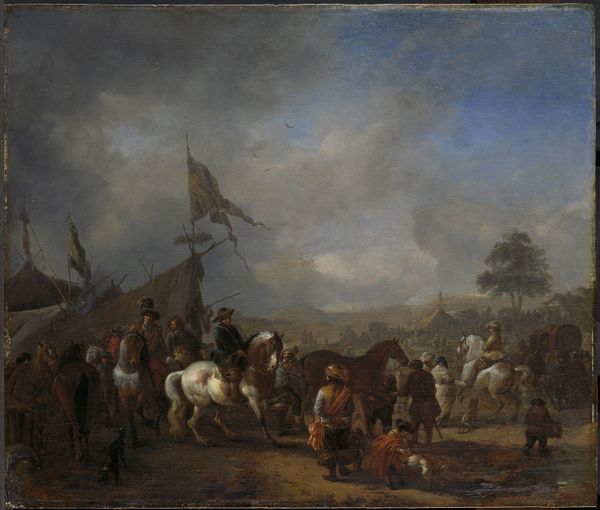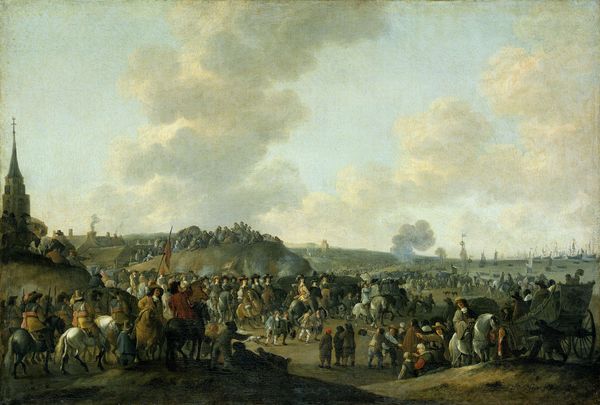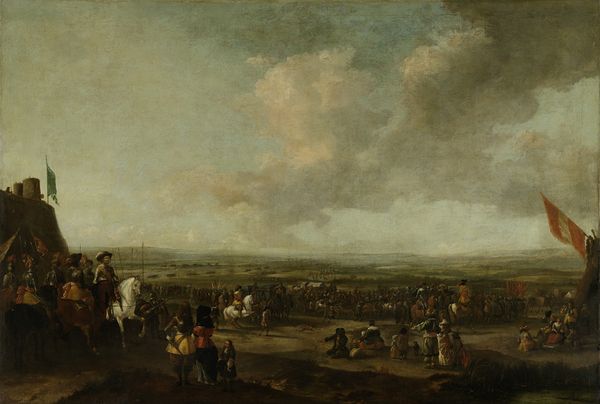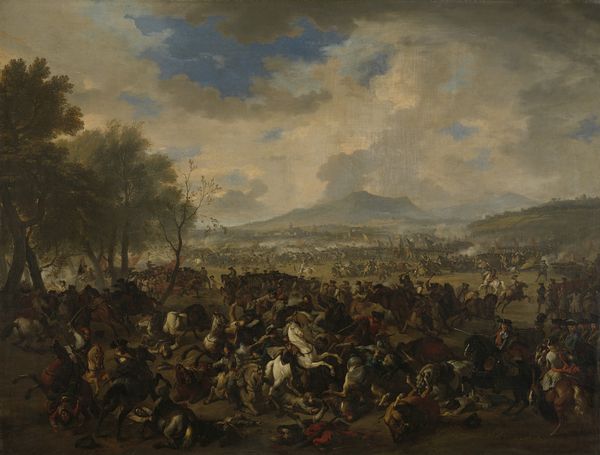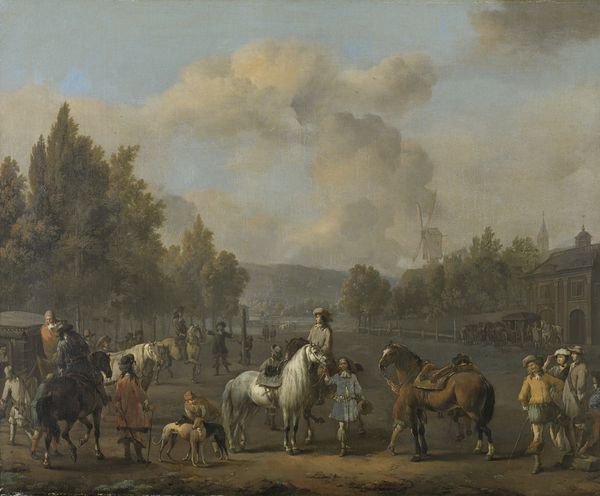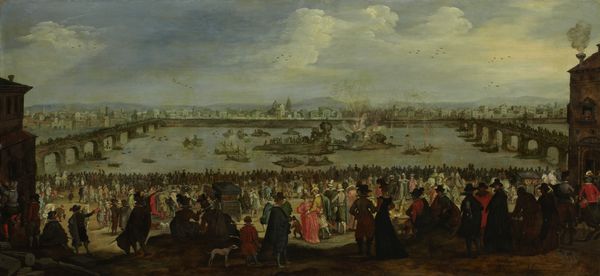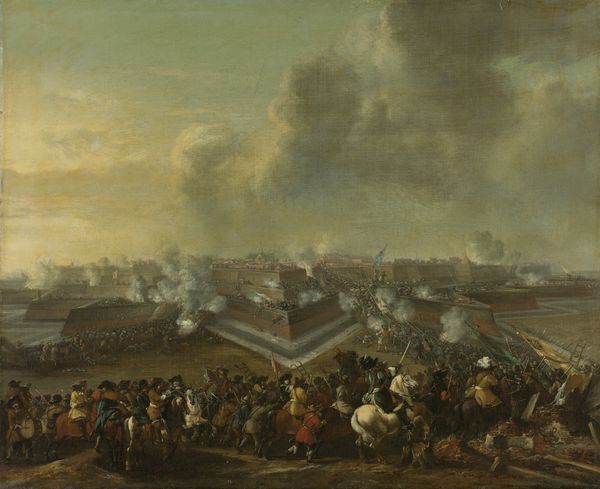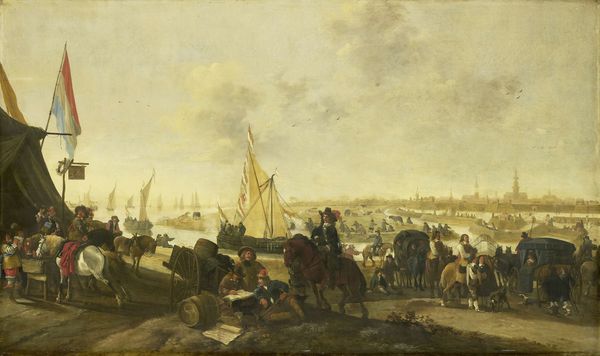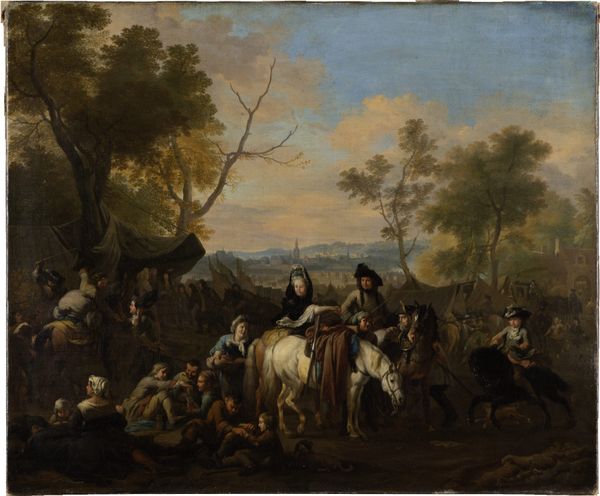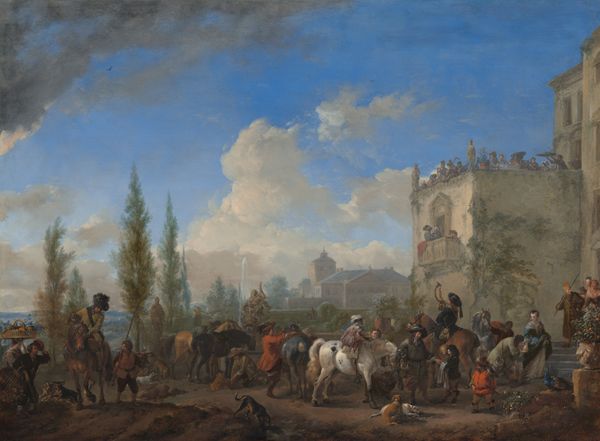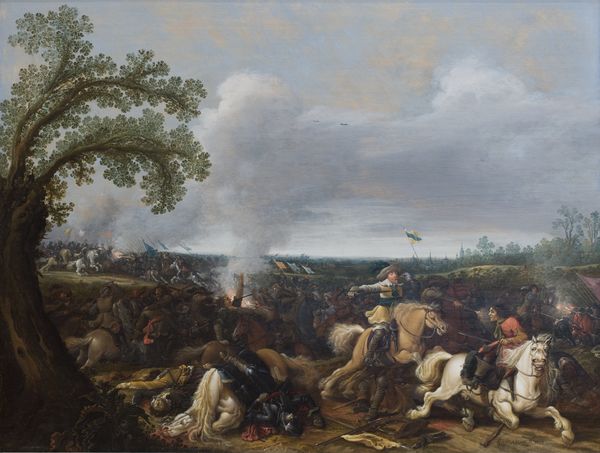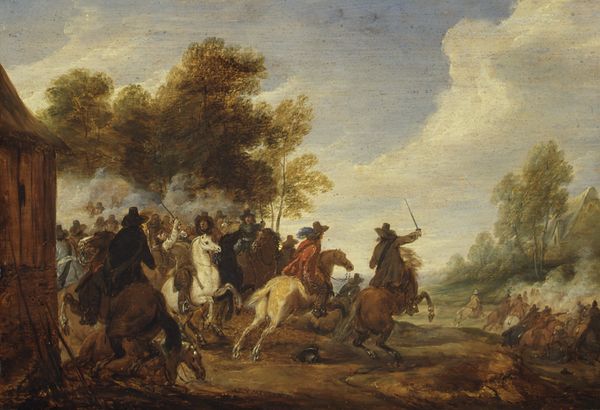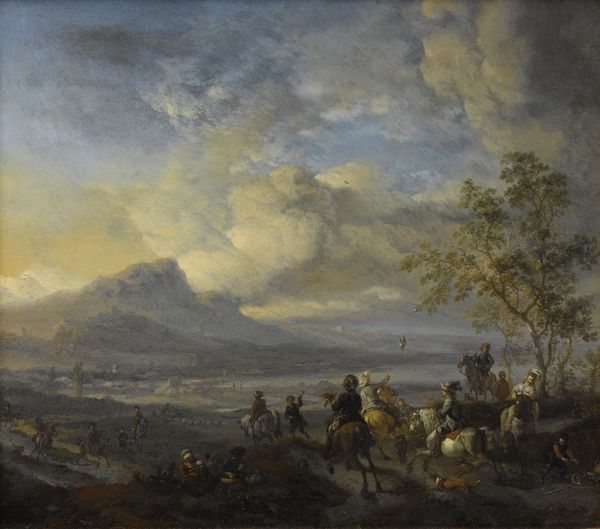
Arrival of Prince William II at the Estate Welna on the Amstel during the Attack on Amsterdam, July 31, 1650 1650 - 1674
0:00
0:00
#
abandoned
#
charcoal drawing
#
possibly oil pastel
#
oil painting
#
derelict
#
underpainting
#
urban art
#
painting painterly
#
digital painting
#
watercolor
Dimensions: height 58 cm, width 100 cm, depth 11 cm
Copyright: Rijks Museum: Open Domain
Curator: Lingelbach's depiction, dating roughly from 1650 to 1674, captures the "Arrival of Prince William II at the Estate Welna on the Amstel during the Attack on Amsterdam, July 31, 1650". It's quite the scene. Editor: My initial sense is a somewhat subdued atmosphere, despite the crowd. The pale palette creates a very tranquil, almost dreamlike quality for such a historic, and ostensibly turbulent, event. The scale of the figures diminishes towards the center, enhancing depth, though at the cost of discernable forms in the crowd. Curator: Indeed. One might assume such a historic event, especially given the 'attack,' would merit a more charged portrayal. But consider the materials: oils, applied in thin layers, allowing light to permeate. This isn't about brute force, but calculated power. How William positioned himself after his father's death using Amsterdam and controlling the militia became integral to building his leadership. Editor: From a purely compositional standpoint, it's fascinating how Lingelbach balances the throng of figures with the expanse of sky and water. The implied lines converge towards the center, yes, guiding the eye, but also somewhat obscuring the focal point. There is very little dynamism beyond linear perspective and atmospheric haziness to enhance mood and tone. Curator: And there we see it – obscured only to some. Lingelbach was keenly aware of appealing to specific audiences of Dutch elites, embedding within the scenes various cultural and political touchstones that could have reinforced particular values. The detailed rendering of their attire, horses, all meticulously crafted...that's no accident! It signaled social standing. Consumption of imagery as social strategy. Editor: True. This level of detailing reinforces a hierarchy, both social and visual. In essence, formal construction works as an explicit manifestation of ideology. The subtle use of light, particularly, to emphasize key figures becomes a symbolic affirmation. Curator: Precisely. Even something as basic as the urban art tag implies this kind of cultural significance; it's about making meaning within existing social landscapes by offering political commentary for wealthy citizens, landowners and noblemen that sought to further centralise monarchial power in the newly established republic. Editor: Ultimately, analyzing Lingelbach's approach gives insight to its unique semiotic framing. By attending closely to colour and composition we decipher its nuanced historical narrative and aesthetic structure. Curator: By acknowledging that art’s cultural work produces meaning and social conditions, as opposed to merely mirroring reality, it leads to the appreciation of the ways that visual structures reproduce a sense of order through a given historical moment.
Comments
No comments
Be the first to comment and join the conversation on the ultimate creative platform.

